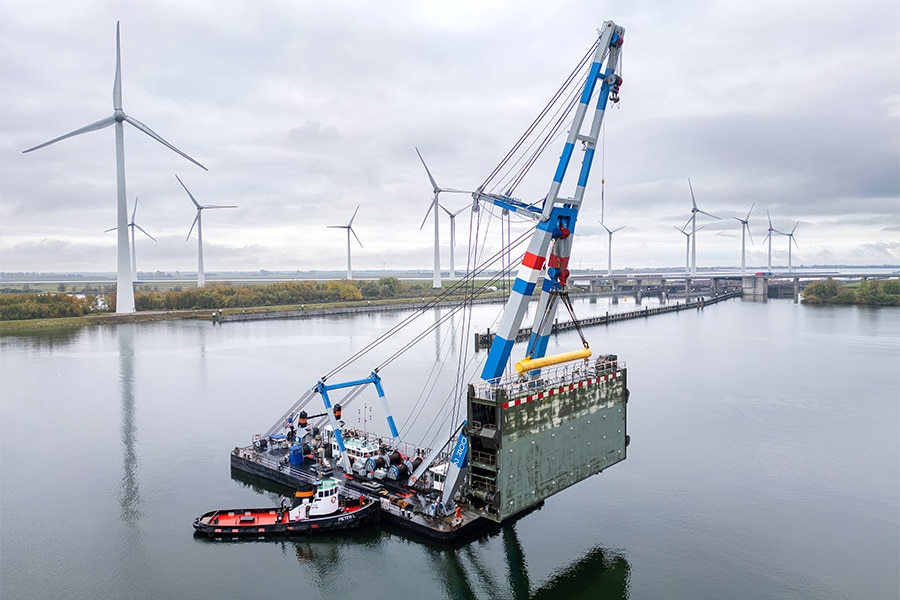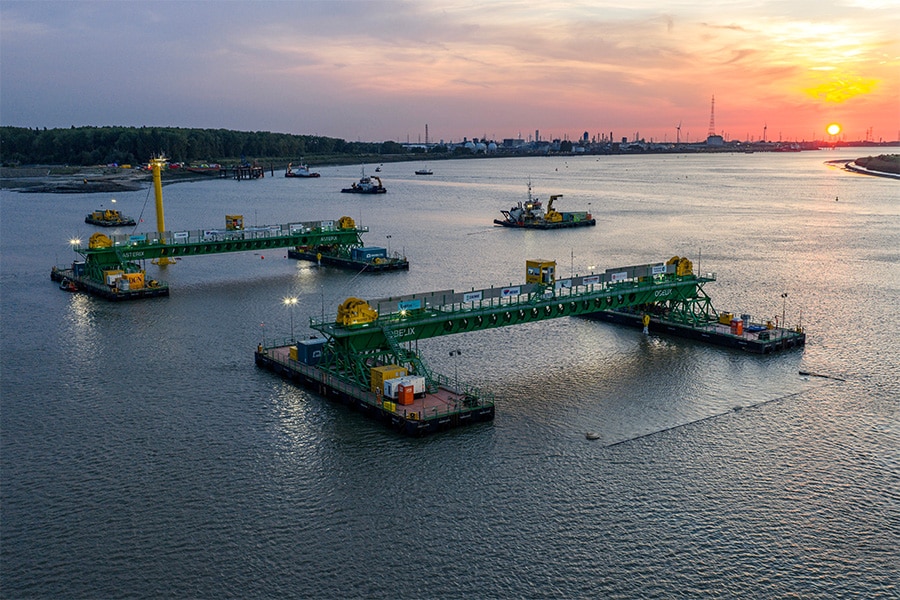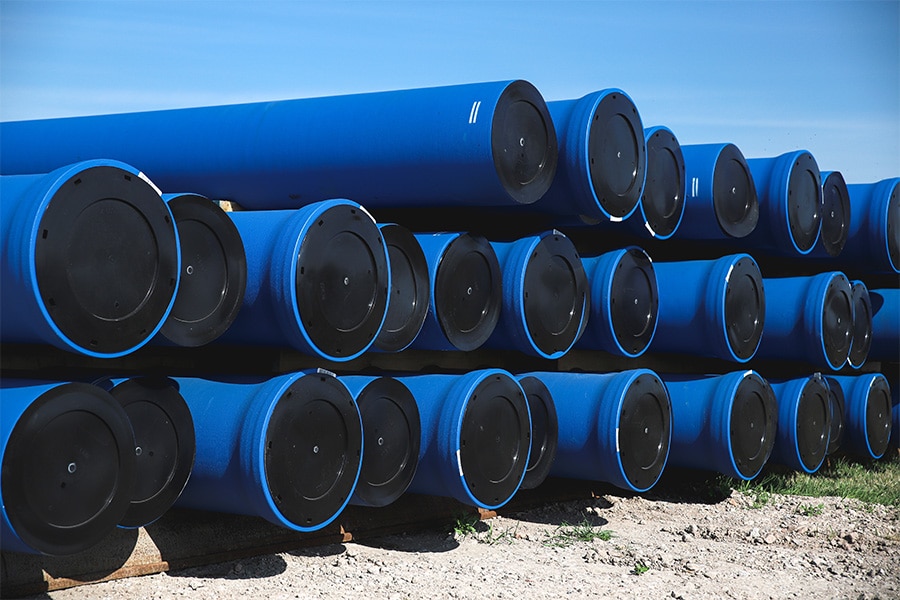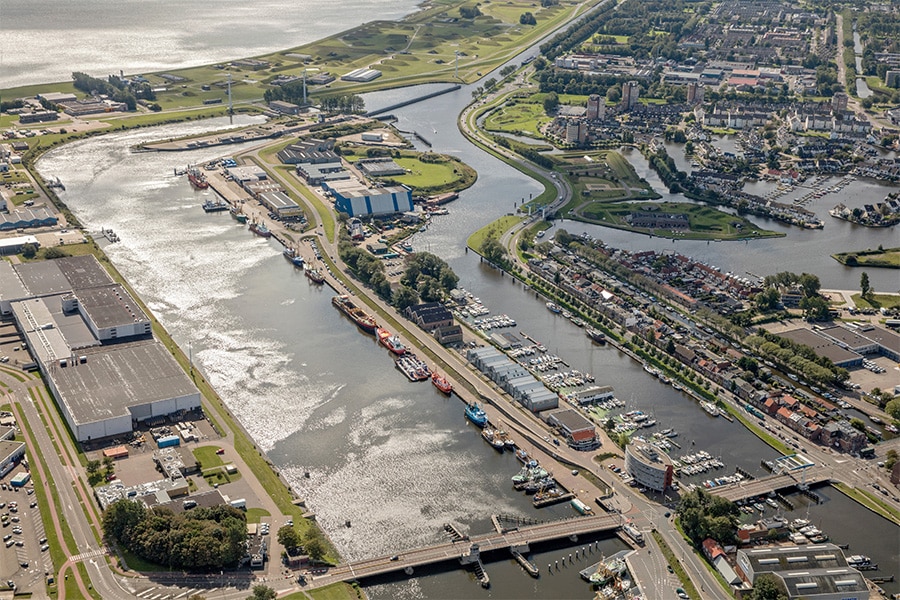
The power of systems integration in the renovation of the Krammersluizen complex
System integration is the silent engine behind complex infrastructure projects. Where dozens of disciplines intersect - from mechanical and electrical engineering to control, civil and cyber security - system integration ensures that all the parts together form a single reliable whole. Nowhere is this interplay more visible than in the renovation of the Krammer lock complex, a technical feat in which design, construction, safety and maintenance have to fit together down to the last detail. Commissioned by construction consortium ZEEKR, INNOCY is one of the parties who, together with CPM Consultancy, is responsible for the system integration department.
The renovation of the Krammersluizen complex is one of the most extensive hydraulic engineering projects today. The complex, located between the fresh Volkerak and the salty Oosterschelde, plays a crucial role in both shipping, road traffic and water management in the Netherlands. With four lock chambers for commercial and recreational shipping, a movable bridge and a unique function in the fresh-salt water separation, it is the largest concrete complex in the Netherlands.
“Since the commissioning of the Krammer lock complex in 1987, much of the technical infrastructure has been severely outdated,” begins Wout van Tol, Manager of System Integration. “In the coming years, almost all installations will be renewed: from electrical systems to hydraulics and mechanical engineering. The complexity lies not only in the size, but especially in the need to carry out the work while the complex remains in use. More than 66,000 ships pass through here annually; it is part of an important international shipping route.”

Integral consistency
Implementation is in the hands of combination ZEEKR, a collaboration between main contractor BESIX and its partners BESIX Unitec, Croonwolter&dros, Demako, Iemants and Bosch Rexroth. “ZEEKR is a reference to certainty in time, integration and connection with the environment and shipping,” explains Van Tol. The multiplicity of disciplines requires tight direction and an integral design process in which all parts fit together seamlessly. That integral coherence is monitored by the systems integration team, in which INNOCY also plays a central role. “Together with the design teams, we ensure that all disciplines - from machine safety and cyber security to RAMS and design - are brought together in one coherent design,” says Thijs van den Eerenbeemt, RAMS engineer at INNOCY. “We are a connecting factor between all design teams. We look across the board, pierce right through the disciplines and, together with the design teams, ensure that the puzzle pieces fall together in the right way.”
Life-cycle approach
INNOCY thinks about the entire life cycle of the complex. Not only about the design phase, but also about operation and maintenance. “By making smart choices at an early stage, a lot of time, money and energy can be saved later on. That is also why we involve maintenance at an early stage,” Thijs explains. “That way we avoid the need for expensive modifications later on or parts that turn out to be difficult to maintain.” INNOCY helps make conscious trade-offs in choices between robustness, maintainability and price. “That combination of broad technical knowledge, experience with this kind of complex and large-scale work and independent control is scarce,” Van Tol knows from experience. “With their pragmatic and life-cycle-oriented approach, INNOCY delivers added value as early as the preliminary design stage. It results in designs that are optimized for risk, cost and performance, think for example of the hinterland protection and continuity of the waterway.”
Steel giant
The renovation of the Krammersluizen complex will run until the end of 2028, followed by three more years of maintenance. The first lock door, a steel giant 26 meters long, 4 meters wide, 12 meters high, was taken to Smulders“ yard in Vlissingen in October for overhaul. ”Each door is then addressed in phases at a rate of 26 weeks per door,” Van Tol explained.“ During the renovation, the system must continue to function, which further increases the need for integral coordination. According to both men, the project is unique of its kind. ”A work of this magnitude, with so many installations and disciplines simultaneously, does not often occur in the Netherlands,“ says Van Tol. The added value of system integration lies in preventing failure costs and increasing reliability. ”By realizing a considered robust and maintenance-friendly design, the safety, availability and maintainability of the complex is optimized."
The renovation of the Krammer Locks is part of Rijkswaterstaat's broader renewal task. Many roads, bridges, locks and viaducts in the Netherlands were built decades ago and are used increasingly intensively. By maintaining and strengthening them now, we ensure that everyone can continue to travel safely, smoothly and reliably - also in the future.




